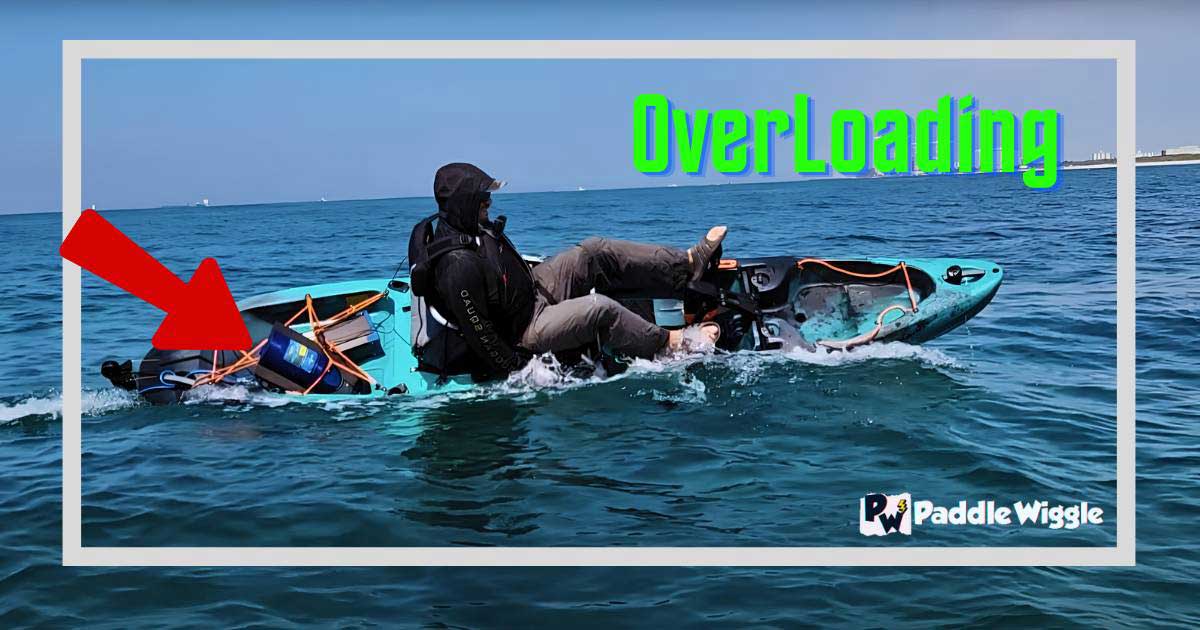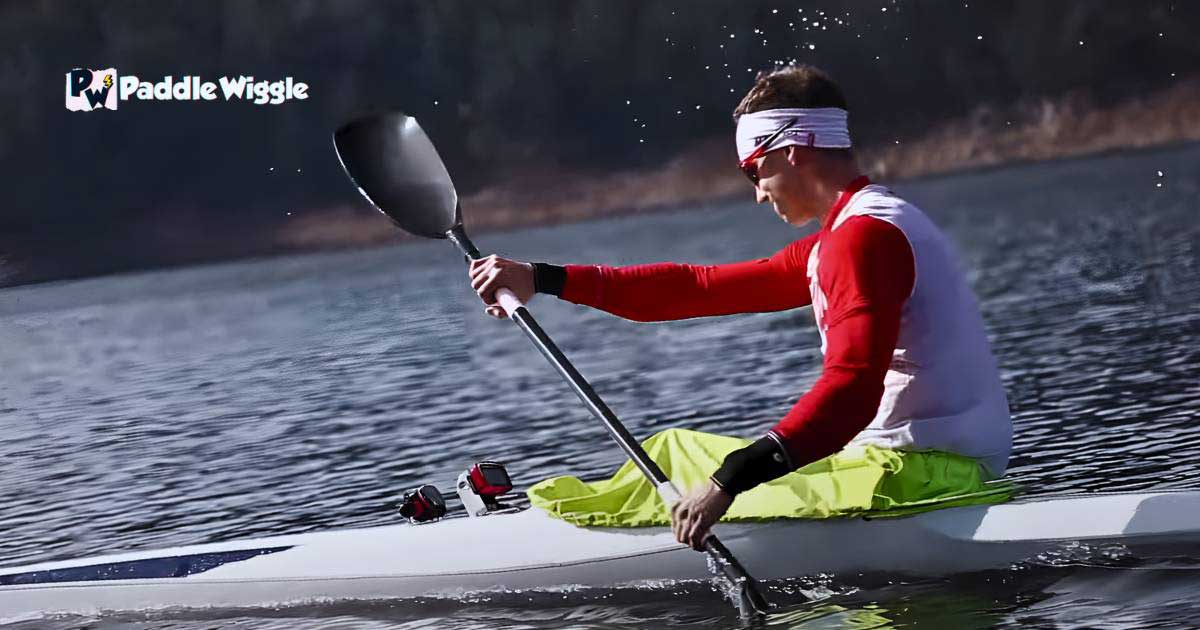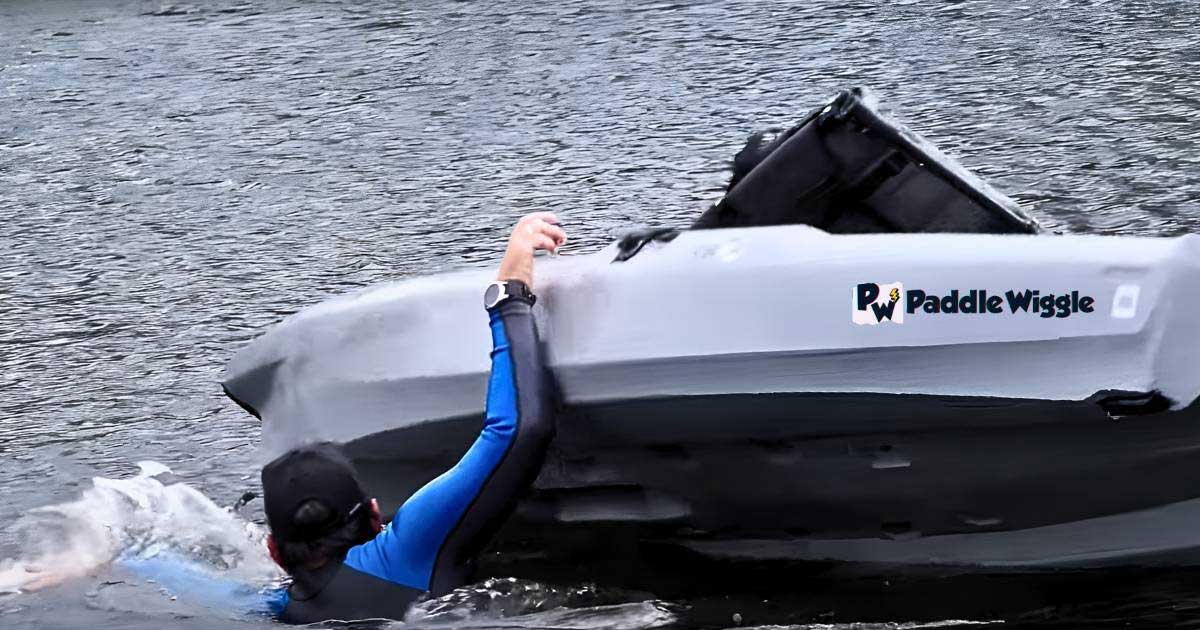Kayaking is an adventurous and fun-filled activity that provides an excellent opportunity to explore water bodies such as rivers, lakes, and even oceans. However, one of the common concerns of kayakers is do kayaks flip over easily.
The truth is, Kayaks can flip over, but whether they do so easily or not depends on several factors. These factors include the design of the kayak, the water conditions, and the paddler’s skill level.
So whether you are a beginner or an experienced kayaker, read on to learn how to stay safe and upright in your kayak.
Contents


Causes That Can Lead to a Kayak Flipping
Kayaks are designed to be stable, but they can still flip over due to various factors. Kayakers need to understand what causes kayaks to flip and how to prevent it from happening. This article will explore the common causes of kayak flipping and provide tips on preventing it.
low center of gravity and a wide base
Kayaks are typically designed with a low center of gravity and a wide base, which makes them stable in calm waters. However, kayaks can become unstable in certain conditions, such as high waves or rough waters. Kayakers can also create instability by improperly balancing or overloading their kayaks.
Overloading


One of the most common reasons why kayaks flip over is due to overloading. Kayaks have a weight capacity, and exceeding this limit can cause the kayak to become unstable and tip over. Before kayaking, it is important to check the kayak’s weight capacity and ensure it is manageable.
Lack of balance
Improper balance can also cause kayaks to flip over. If the weight is not evenly distributed in the kayak, it can cause the kayak to tilt to one side and potentially capsize. To prevent this, kayakers should ensure that the weight is distributed evenly, keeping their center of gravity low and centered in the kayak.
Water Condition
Rough waters can also cause kayaks to flip over. Waves and currents can destabilize kayaks and make them more likely to capsize. Before heading out on the water, kayakers should check the weather and water conditions to ensure they are safe for kayaking.
Improper paddling techniques
Improper paddling techniques can also contribute to kayak flipping. If a kayaker makes abrupt movements or uses inefficient strokes, it can cause the kayak to become unstable. To prevent this, kayakers should practice proper paddling techniques and use smooth, efficient strokes to maintain stability.
Wind gusts
Wind gusts are another factor that can cause kayaks to flip over. Strong gusts of wind can cause the kayak to tilt to one side, making it more likely to capsize. Kayakers should be aware of wind conditions and adjust their paddling technique accordingly.
Which Type of kayaks are more prone to flip over?
Kayaking is a popular outdoor activity enjoyed by people all around the world. You can do it in calm lakes, rivers, and rough white waters. However, kayaking does come with certain risks, with one of the biggest concerns being flipping over. The risk of flipping over can vary depending on the type of kayak being used and the water conditions.
Sit-on-top kayaks – how prone they are to flip over?
Sit-on-top kayaks are one of the most common kayaks and are generally considered more stable than other types. They have an open design, which allows the paddler to sit on top of the kayak and have a more upright posture. Sit-on-top kayaks are ideal for calm waters such as lakes and slow-moving rivers and are not prone to flipping over as much as other types.
On the other hand, closed-deck kayaks have a lower center of gravity, making them less stable in rough waters. The paddler’s weight is distributed higher in the water, making it easier to tip over. This type of kayak is commonly used in sea kayaking, where the waves can be more unpredictable, and the kayak needs to be more maneuverable.
Do Fishing Kayaks Flip Over Easily?
Fishing kayaks, as the name suggests, are designed specifically for fishing. They are generally wider and more stable than other kayaks, making them less prone to flipping over. However, they may need to be more maneuverable, making them less suitable for whitewater kayaking.
Do Touring Kayaks Flip Easily?
Touring kayaks, also known as sea kayaks, are designed for longer trips and are typically longer and narrower than other kayaks. They lack the primary and secondary stability found in other kayaks, making them more maneuverable and less stable. This means they have a higher risk of capsizing, especially for non-experienced paddlers. Touring kayaks are typically used in open waters such as the ocean, where the waves can be bigger and more unpredictable.
Do Whitewater Kayaks Flip Over Easily?
Whitewater kayaks are designed specifically for use in whitewater rapids and are built to be very maneuverable. They have a wide, flat bottom and a low center of gravity, which makes them more stable in rough waters. However, they are also more prone to flipping over due to their design and the extreme conditions they are used in.
Learn to Prevent Tipping And Keep Your Kayak Stable
To prevent kayak flipping, there are several things that you’ll need to do.
- First, it is important to check the kayak’s weight capacity and ensure it is not overloaded.
- Second, kayakers should distribute weight evenly in the kayak to maintain proper balance. Third, kayakers should check water and weather conditions to ensure they are safe.
- Fourth, kayakers should practice proper paddling techniques to maintain stability.
- Finally, kayakers should know their surroundings and adjust their paddling technique accordingly.
Let’s explore some practical ways to prevent your kayak from tipping.
Choose Your Kayak Carefully
The design of your kayak plays a crucial role in its stability. Wider kayaks tend to be more stable than narrower ones as they have a broader base, providing more stability. Additionally, kayaks with a flat hull tend to be more stable than those with a rounded hull as they provide a more stable platform.
Kayaks with wider cockpits and longer waterlines are also more stable.
Maintain Balance
Maintaining balance is essential when kayaking. When paddling, keep your weight evenly distributed between both sides of the kayak. This helps keep the kayak stable and reduces the risk of tipping. Try to keep your movements slow and smooth, avoiding sudden jerks that can disrupt your balance.
Also, avoid leaning too far to one side of the kayak, which can destabilize the kayak and increase the risk of tipping.
Use Proper Paddling Technique


Your paddling technique can significantly affect your kayak’s stability. Improper paddling techniques, such as poor strokes, can lead to your kayak tipping over. It’s important to use the correct strokes, such as the forward and sweep strokes, to maintain balance and control the kayak’s movements.
Additionally, avoid paddling too hard or fast, as this can cause your kayak to become unstable. Instead, try to maintain a steady and consistent pace. If you’re new to kayaking, consider taking a class or hiring an instructor to help you improve your paddling technique.
Environmental Conditions
Environmental conditions like wind, waves, and currents can also affect your kayak’s stability. In general, calmer waters are more stable than rougher waters. If you’re kayaking in windy conditions, try to paddle with the wind at your back or across your side. Paddling against the wind can be challenging and increase the risk of tipping.
Before setting out on your kayaking trip, check the weather and water conditions. If conditions are unfavorable, consider postponing your trip to a later time. It’s also essential to wear appropriate safety gear, such as a life jacket, to help keep you afloat in an accident. Nonetheless, be prepared for any unforeseen circumstances.
What to do if your kayak flips over?


Capsizing, or flipping over, can happen to even the most experienced kayakers. Knowing how to upright your kayak quickly and efficiently is important to avoid potential danger.
Here are the steps to follow to upright your kayak if it flips over:
- Release Your Spray Skirt: If you have a spray skirt, release it from the cockpit by pulling the loop on the front of the skirt. This will allow you to exit the kayak.
- Exit The Kayak: Push off the kayak while pulling your body towards the surface. Keep your head up to breathe, and use your arms to swim towards the surface.
- Flip The Kayak: Once you’re out of the kayak, position yourself at the center of the overturned kayak. With your hands on the side of the kayak, push down and lift your body onto the kayak. With a swift motion, flip the kayak over.
- Get Back In The Kayak: Swim around to the back of the kayak and grasp the cockpit rim with one hand and the other on the opposite side. Pull yourself up and onto the kayak, lying across it. Once you have balanced your weight, slowly and carefully slide back into the cockpit.
It’s important to note that kayakers should practice wet exit and uprighting their kayak in a controlled and safe environment before attempting it in an emergency. By practicing this skill, you’ll become more confident and comfortable with the process, making it easier to perform in a high-pressure situation.
In addition, it is important to wear appropriate safety gear, such as a personal flotation device, and to paddle with a partner or in a group for added safety. Proper safety gear and paddling techniques can greatly reduce the risk of capsizing and make it easier to upright your kayak if it flips over.
LEARN MORE
Do Fishing Kayaks Flip Easily?
Fishing kayaks, like any other type of kayak, have the potential to flip over. One factor to consider is the design of the fishing kayak.
Some fishing kayaks are designed to be wider and more stable than traditional kayaks to provide a better platform for fishing. These wider kayaks are less likely to flip over, especially in calm water conditions.
However, if the kayak is designed to be more narrow and sleek to increase its speed and agility, it may be more prone to flipping over if the paddler is not skilled or experienced in maintaining balance.
Do Sit-On-Top Kayaks Flip Easily?
No, sit-on-top kayaks are less likely to flip over. Sit-on-top kayaks are generally considered more stable and less likely to flip over than traditional sit-inside kayaks. This is due to several design features that contribute to their stability.
Firstly, sit-on-top kayaks have a wider and flatter hulls than sit-inside kayaks. This wider hull provides greater stability and balance, making it less likely to tip over in calm or choppy waters. Additionally, the flat bottom of sit-on-top kayaks helps to distribute the paddler’s weight more evenly, further increasing stability.
Secondly, sit-on-top kayaks typically have scupper holes or drainage plugs that allow water to drain out of the kayak, which helps to prevent the kayak from becoming swamped or flooded. This is particularly important in rough waters or if the kayak does flip over.
Thirdly, sit-on-top kayaks have a self-bailing design that allows water to flow out of the kayak through the scupper holes or drainage plugs. This means that even if the kayak does take on water, it can quickly drain out, reducing the risk of capsizing.
Final Word
To sum up, kayaks have the potential to flip over. Especially when you do not take the necessary precautions. The kayak’s design, balance, paddling technique, and water conditions all influence the likelihood of a kayak tipping. However, the risk of flipping over can be significantly reduced with proper precautions and techniques.
So, follow those steps and prevent your kayak from flipping over. But don’t worry if you can’t avoid that! It’s not too difficult to upright a kayak. However, be aware of and avoid potential hazards such as rough waters, obstacles, and changing weather conditions.



